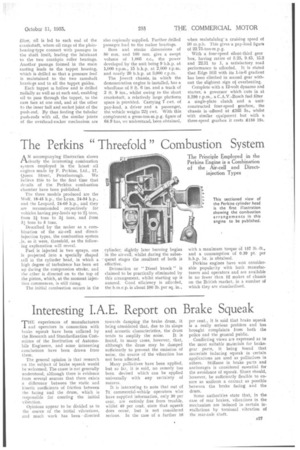Interesting I.A.E. Report on Brake Squeak
Page 41

If you've noticed an error in this article please click here to report it so we can fix it.
THE experiences of manufacturers and operators in connection with brake squeak have been collated by the Research and Standardization Consmittee of the Institution of Automobile Engineers, and some interesting conclusions have been drawn from them,
The general opinion is that research on the subject of brake squeak would be welcomed. The cause is not generally understood, although there is evidence from several sources that there exists a difference between the static and kinetic coefficients of friction between the facing and the drum, which is responsible for creating the initial vibration.
Opinions appear to be divided as to the source of the initial vibrations, and much work has been directed towards clamping the brake drum, it being ceinsidered that, due to its shape and acoustic characteristics, the drum tends to amplify the noise. It is found, in many cases, however, that, although the drum may be damped sufficiently to prevent the emission of noise, the source of the vibration has not been affected.
Many palliatives have been applied, but so far, it is said, no remedy has been devised which can be applied universally with any certainty of success.
It is interesting to note that out of 71 commercial-vehicl,e operators who have supplied information, only 30 per cent. are entirely free from trouble, whilst 40 per cent, state that squeak does occur, but is not considered serious. In the case of a further 16 per cent., it is said that brake squeak is a really serious problem and has brought complaints from both the police and the general public.
Conflicting views are expressed as to the most suitable materials for brakegear parts, it being found that materials inducing squeak in certain applications are used as palliatives in others. Stiffness in brake parts and anchorages is considered essential for the avoidance of squeak. Shoes should, however, be sufficiently flexible to ensure as uniform a contact as possible between the brake facing and the drum.
Some authorities state that, in the case of rear brakes, vibrations in the mechanism are induced in certain installations by torsional vibration of the rear-axle shaft.




























































































